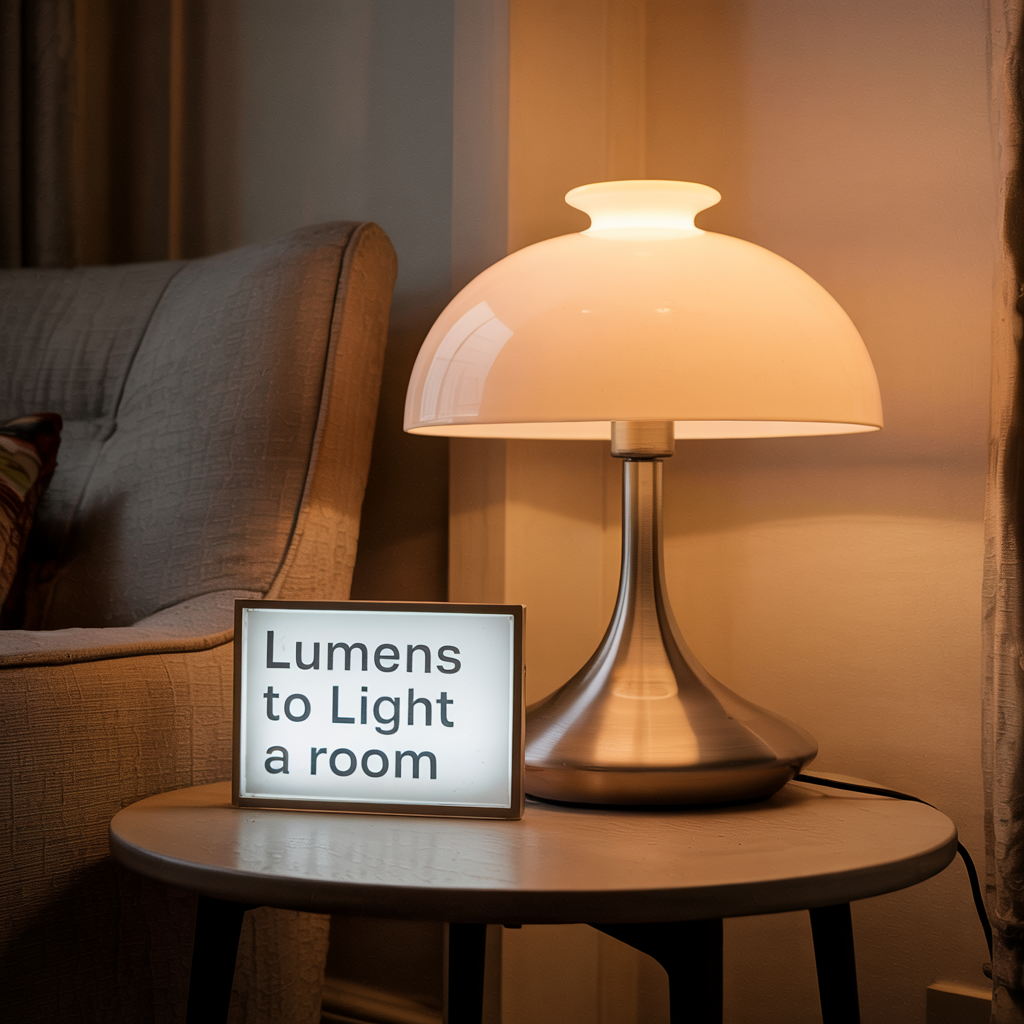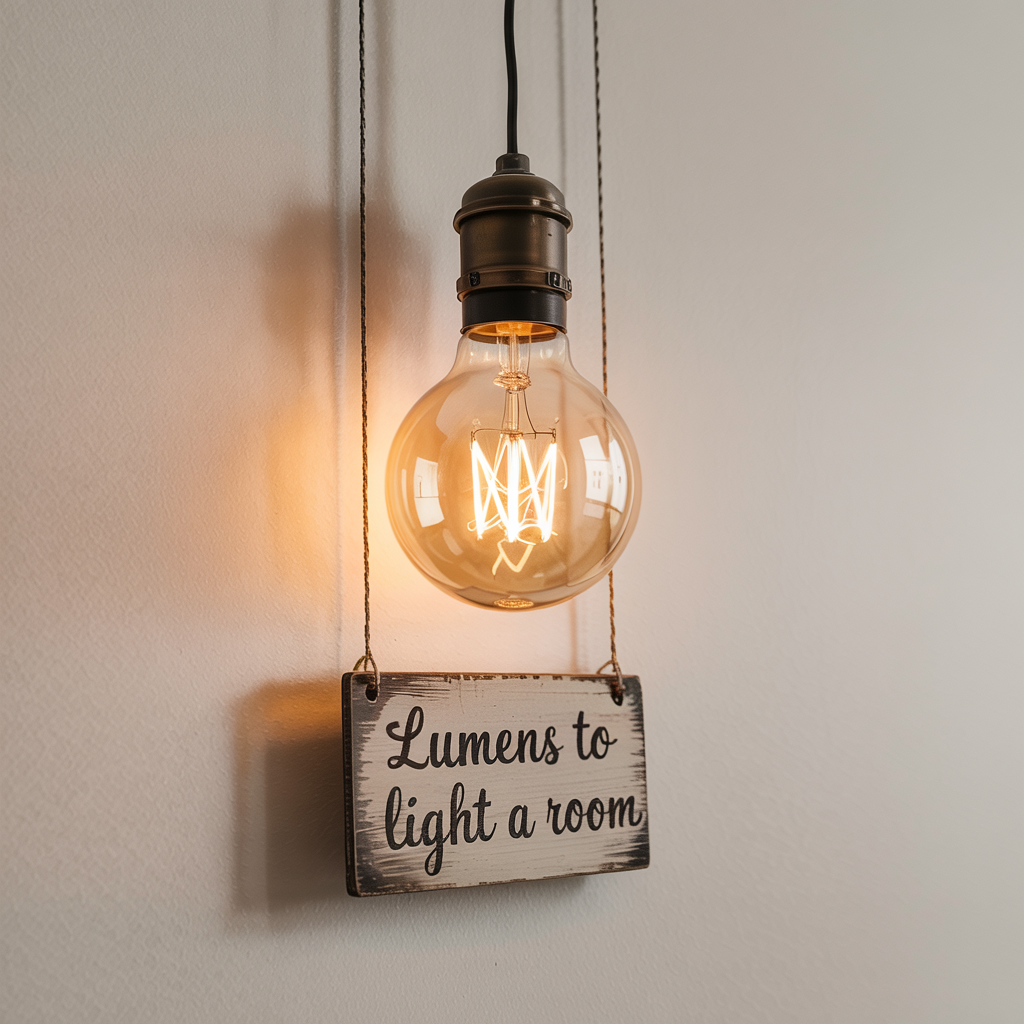Lighting Your Home: How Many Lumens To Light A Room?
Are you tired of dimly lit rooms and struggling to find the right lighting for your space? Choosing the right lighting can dramatically transform the ambiance and functionality of any room. Understanding lumens is key to achieving optimal illumination. How many lumens to light a room? This comprehensive guide will delve into the world of…
Are you tired of dimly lit rooms and struggling to find the right lighting for your space? Choosing the right lighting can dramatically transform the ambiance and functionality of any room. Understanding lumens is key to achieving optimal illumination. How many lumens to light a room? This comprehensive guide will delve into the world of lumens, explaining what they are, how they impact your home’s lighting, and how to determine the appropriate lumen count for each room. We’ll cover everything from understanding lumen measurements to considering factors like room size, ceiling height, and desired ambiance. By the end, you’ll be confident in selecting the perfect lighting for every corner of your home.
Lumens (lm) are the international unit of luminous flux, essentially measuring the total amount of visible light emitted by a
light source. Think of it as the overall brightness. A higher lumen value indicates a brighter light. Unlike watts, which measure power consumption, lumens measure the actual light output. A 60-watt incandescent bulb might produce around 800 lumens, while a modern LED bulb can achieve the same brightness with significantly less wattage, often around 800-1000 lumens using only 10-15 watts.
How Many Lumens To Light A Room?
To light a room, you need 20 lumens per square foot for ambient lighting. Multiply your room’s square footage by 20. For example, a 200 sq ft room needs about 4,000 lumens. Task lighting areas like kitchens or bathrooms may need 50–75 lumens per square foot.
Why Lumens Matter for Room Lighting?

Selecting the correct number of lumens is crucial for creating a functional and aesthetically pleasing space. Insufficient lumens lead to poorly lit rooms, eye strain, and safety hazards. Conversely, excessive lumens can result in glare, harsh lighting, and an uncomfortable environment. The appropriate lumen level depends on several factors, as we’ll discuss later.
Read More: 10 Brilliant Drop Ceiling Lighting Ideas to Brighten Up Any Room
Factors Influencing Lumen Requirements
Determining the appropriate lumens for a room isn’t simply a matter of room size. Several factors interact to determine your lighting needs:
- Room Size: Larger rooms require more lumens for adequate illumination.
- Ceiling Height: Higher ceilings necessitate more lumens as the light has to travel a greater distance.
- Room Color: Darker walls absorb more light, requiring higher lumen output compared to lighter-colored walls.
- Room Purpose: Task-oriented areas like kitchens and workspaces need brighter lighting (higher lumens) than relaxation areas like bedrooms.
- Type of Lighting Fixture: The design and efficiency of the light fixture affect light distribution and perceived brightness.
- Ambient Light: Natural light from windows can significantly reduce the required lumen output from artificial sources.
Calculating Lumens Per Square Foot
A common guideline is to estimate the required lumens per square foot. While not a precise formula, it provides a starting point:
- Accent lighting (hallways, bathrooms): 10-20 lumens per square foot.
Remember that these are just general recommendations. Actual requirements may vary based on the specific factors mentioned earlier.
Read More: What Size Recessed Lights for Living Room? The Straightforward Answer For You
Lumens for Different Room Types

Living Room
Living rooms generally benefit from a combination of ambient, task, and accent lighting. Ambient lighting provides overall illumination, task lighting focuses on reading or other activities, and accent lighting highlights artwork or architectural features. Aim for 30-50 lumens per square foot for ambient lighting, with additional task and accent lighting as needed.
Bedroom
Bedrooms require softer, more relaxing lighting. Ambient lighting is crucial, with 20-40 lumens per square foot typically sufficient. Bedside lamps provide task lighting for reading.
Kitchen
Kitchens require bright, task-oriented lighting for food preparation and cleanup. Aim for a minimum of 70 lumens per square foot, with additional task lighting under cabinets and above the stove.
Bathroom
Bathrooms need bright, even illumination for safety and grooming. Aim for 50-70 lumens per square foot, with vanity lighting providing focused task lighting.
Dining Room
Dining rooms benefit from warm, ambient lighting centered around the dining table. Consider a chandelier or pendant light providing around 40-60 lumens per square foot.
Choosing the Right Light Bulbs
The lumen output is clearly stated on most light bulb packaging. LEDs are generally the most energy-efficient option and offer a wide range of lumen outputs. Consider the color temperature (measured in Kelvin) as well. Lower Kelvin values (2700K-3000K) produce warmer, more yellowish light, suitable for living rooms and bedrooms. Higher Kelvin values (5000K-6500K) produce cooler, bluish light, better for kitchens and bathrooms.
Layering Lighting for Optimal Results
Achieving the best lighting often involves layering different light sources: ambient, task, and accent. Ambient lighting provides general illumination, task lighting focuses light on specific areas, and accent lighting highlights objects or architectural details.
- Relying solely on overhead lighting: This often results in uneven illumination and dark corners.
- Using too few light sources: Insufficient lighting creates a dim and unpleasant atmosphere.
- Ignoring natural light: Maximize natural light by strategically placing windows and using light-colored curtains.
- Choosing the wrong color temperature: Using cool-toned light in a relaxing space can be jarring.
Avoiding Common Lighting Mistakes
Many people make mistakes when lighting their homes. Avoid these common pitfalls:
Light Bulb Types and Lumen Comparisons
Different types of light bulbs offer varying lumen outputs for the same wattage. Here’s a simplified comparison (note that actual lumens can vary based on specific models):
| Bulb Type | Wattage | Approximate Lumens |
|---|---|---|
| Incandescent | 60W | 800 |
| Halogen | 50W | 600 |
| CFL | 13W | 800 |
| LED | 10W | 800-1000 |
The Importance of Light Distribution
The way light is distributed throughout a room is just as important as the total number of lumens. Consider factors like the light fixture’s design and the placement of light sources. Using different types of fixtures can create a more layered and effective lighting scheme. Lampshades, for example, can diffuse light to create a softer ambiance.
Using Light Meters for Precise Measurements
For a precise measurement of lumens in a room, a light meter is useful. These devices measure the illuminance (lux) at specific points in the room. While lux and lumens are related, lux indicates the light falling on a surface area, while lumens measure total light output. Converting between the two requires more technical calculations, often unnecessary for home lighting scenarios.
Budgeting for Lighting
The cost of lighting a room varies depending on the number and type of light fixtures and bulbs. LEDs are generally more cost-effective in the long run due to their energy efficiency. Factor in the cost of installation and potential professional assistance.
Frequently Asked Questions
What are lumens and how do they relate to watts?
Lumens measure the amount of visible light emitted, while watts measure energy consumption. A higher wattage bulb doesn’t always mean higher lumens. LEDs, for example, are highly energy-efficient and provide substantial lumens with lower wattage compared to incandescent or halogen bulbs.
How do I calculate the lumens needed for my living room?
Multiply your living room’s square footage by 30-50 lumens per square foot (depending on the desired brightness). Add more lumens if you have dark walls or high ceilings. Remember this is a guideline; adjust based on your preferences.
What is the best type of light bulb for different rooms?
LEDs are generally recommended for their energy efficiency and wide lumen range. However, the color temperature matters: Warmer tones (2700-3000K) for bedrooms, and cooler tones (5000-6500K) for kitchens and bathrooms.
Can I use a light meter to determine lumens in my home?
Yes, a light meter measures illuminance in lux, which indirectly relates to lumens. While not a direct lumen measurement, it helps assess lighting levels in different areas of your home.
What is the difference between ambient, task, and accent lighting?
Ambient lighting provides general illumination. Task lighting focuses light on specific areas where activity happens (like a kitchen countertop). Accent lighting highlights objects or architectural features.
Final Thoughts
Choosing the right number of lumens for each room is crucial for creating a functional, comfortable, and aesthetically pleasing home. By understanding the factors that influence lumen requirements – room size, ceiling height, wall color, and the desired ambiance – you can effectively calculate and achieve the perfect lighting for your space. Remember that layering different light sources and considering light distribution contribute to a more well-lit and versatile living environment. Don’t be afraid to experiment with different bulb types, color temperatures, and fixture styles to achieve your desired lighting scheme. With careful planning, you can transform your home into a well-lit sanctuary.

